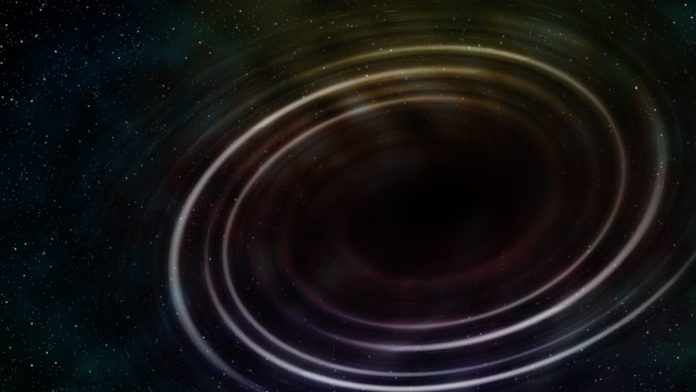A blazar is a feeding supermassive black hole (SMBH) in the heart of a distant galaxy that produces a high-energy jet viewed face-on from Earth. They are among the most luminous and energetic objects in the Universe and are composed of ionized matter traveling at nearly the speed of light.
A group of astronomers from Argentina, Spain, Italy, the USA, and India discovered a binary supermassive black hole system in the gravitationally lensed blazar AO 0235+164. The system will be a strong candidate for future detection of gravitational waves (GWs).
The blazar AO 0235+164 is unique as it is gravitationally lensed by intervening galaxies. Astronomers used extensive optical photometric observations around the globe during the last four decades (1982 – 2019).
They identified recurrent double-peaked flaring episodes that occur every eight years or so, with a gap of around 2 years between two flare peaks. Five such periodic patterns were discovered, and the next flaring episode is expected to occur between November 2022 and May 2025. To confirm the following periodic pattern, a global optical photometric monitoring program has been launched under the WEBT (Whole Earth Blazar Telescope) consortium.
To confirm the following periodic pattern, a global optical photometric monitoring campaign has been initiated under WEBT (Whole Earth Blazar Telescope) consortium.
The team detected five sets of double-peaked flaring activities during time ranges- January 1982- October 1984, March 1989- July 1993, April 1996- March 2001, June 2006- June 2009, and May 2014- May 2017. They expect the next two years-long flaring episodes to happen between November 2022 and May 2025. An intensive multi-wavelength WEBT campaign will be conducted to test the persistence of this apparent nearly-periodic oscillation (QPO) in AO 0235+164.
Journal Reference:
- Abhradeep Roy et al. Detection of a quasi-periodic oscillation in the optical light curve of the remarkable blazar AO 0235+164. DOI: 10.1093/mnras/stac1287
